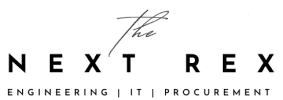Buying SD cards might look easy when you see their specification on paper, but it’s a whole new ball game when you actually get down to making the purchase, and the right one at that. Any impulsive decision can lead you to buying the wrong one, but not to worry, because this ideal SD card buying guide will serve as the perfect hub of information for you to purchase your perfect SD card.
In terms of physical size, how many SD card types are there?
Currently there are two types that you need to be concerned with:
- SD (secure digital)
- microSD (micro secure digital)
As the name suggests, SD is larger compared to microSD, and while you might know the differences between the two in terms of their physical appearance, there are a total of three formats that you might not know about. They are as follows:
- SD (same is the case with microSD): This format has a maximum capacity of 2GB and can be used in any slot designed to fit in such a card. Looking at how larger capacity storage cards have become extremely affordable, we honestly doubt that you will concern yourself with this format.
- SDHC (same is the case with microSDHC): This format has a capacity range from 2GB to 32GB and are widespread in terms of popularity. You should be aware that cards of this format can only be used in hardware that either support SDHC or SDXC.
- SDXC (same is the case with microSDXC): This format can take storage card capacities all the way up to 2TB. While in terms of storage size, SD cards are being sold boasting capacities of 512GB, but the largest microSD cards that have been announced till now go up to just 256GB. Needless to say, manufacturers are going to have to up that storage by a lot if we want to see a newer format introduced in the future.
How to determine the speed of an SD card and before you ask, a Class 10 storage card is not sufficient proof that it is going to be fast card
For the longest time, you were led to believe that if a SD card has a Class 10 labelled on its packaging, it immediately meant that you will get sufficient read and write speeds from it. That’s not necessarily true, but we will get to that later. For now, we must tell you that there are a total of four speed classes and their minimum write speed per second have been listed right next to them.
- Class 2: Minimum 2 megabytes per second
- Class 4: Minimum 4 megabytes per second
- Class 6: Minimum 6 megabytes per second
- Class 10: Minimum 10 megabytes per second
As you can see, Class speeds show you the base level of speed that can be written by a storage card, which means that it is quite possible for a Class 2 SD card to write speeds higher than 2 megabytes per second. Unfortunately, there are other factors and variables that will determine the overall speed and you are about to read that in the next section.
Ultra High Speed or UHS: What is it exactly?
Ultra High Speed or UHS is the bus interface of the storage card. SDHC (or microSDHC) and SDXC (or microSDXC) can support UHS since they feature improved circuitry which is ultimately responsible for these higher speeds. Currently, there are two versions of UHS and they have been listed below:
- UHS-I (can deliver bus speeds up to 104 megabytes per second)
- UHS-II (can deliver bus speeds up to 312 megabytes per second)
Purchasing a SD card with a bus speed of UHS-II will certainly work in your favor, but you also need to keep in mind that these cards are more expensive than the rest of the pack. Additionally, there are a few more things that you should be aware of before you come to a purchasing decision.
UHS speed class
We covered bus interface of SD cards, so now let us move on to UHS speed classes. UHS speed displays the minimum write speed for storage cards that support the UHS-I and UHS-II bus speeds and they are divided into two speed classes:
- U1: Minimum of 10 megabytes per second
- U3: Minimum of 30 megabytes per second
Undoubtedly, storage cards that have U3 labelled on their packaging or even on their surface will deliver a minimum write speed of 30 megabytes per second, but are also going to be extremely expensive thanks to those increased speeds.
What is relative speed and rated speed and why are they labelled on SD cards?
You may have noticed that most manufacturers tend to label a speed metric for their storage cards. For example, one 32GB SD card could have a rated speed of 40MB/s (40 megabytes per second) stated by the manufacturer. While it is a good thing that manufacturers list down the speeds of their products, it should be noted that these results were probably obtained in the most ideal of conditions; conditions that you will probably never get to experience. In short, whatever rated speed you see on your SD card, always assume that the speed is not the average write speed of the card, but is rather the maximum speed a storage card can write data at.
As for relative speed, if you have ever purchased a DVD-ROM drive, you might have noticed a little speed value written on it. This could range from 2x to 16x. 2x or 16x represents the amount of speed multiplied by 150KBps (kilobytes per second). In the same way, manufacturers also print a relative speed metric onto their storage cards and half the time, you will probably see 1000x labelled on them. Unfortunately, do not be under the impression that just because it says 1000x on the packaging or the SD card itself, it is going to be a fast storage card. Instead, rely on your mathematical skills to be your best friend that day.
If you see a relative speed of 1000x labelled on a storage card, then multiply that by 150KBps and you will get the relative speed in kilobytes per second, which in this case is 150,000KBps, or 146MBps (megabytes per second). Did you see how we got our answer? After getting the answer in kilobytes per second, we divided our result by 1024 in order to convert the answer to megabytes per second, which in this case came to be 146MBps.
Are all of these details labelled on the SD card?
They most certainly are, and you will do yourself a huge favor if you decide to pay attention to all of these details rather than relying on word of mouth statements such as a Class 10 storage card is the best card available in the industry. It always pays to be extra vigilant.
There is a storage card made for everybody and for every gadget
With drones, action cameras and smartphones effortlessly able to record 4K footage at 30 frames per second, you will obviously need a very fast SD card to write all of that data down otherwise if you look at the final footage after inserting the storage card inside your desktop or laptop computer, the video is going to be extremely choppy and there are going to be a ton of hitches in between the video. Now why does that happen? It is because data is being recorded faster than what the storage card can write, leading to performance issues. If you are going to record 4K footage for the foreseeable future, then it is highly recommended that you invest in a SD card with a bus interface of UHS-II and UHS speed class of U3.
If you are going to purchase a storage card just for capturing images, you can easily purchase a Class 2 storage card and make this possible. However, if you are going to shoot RAW photos (or even videos), then you should invest in a U3 or U1 SD card at a bare minimum. Remember, the more performance you want, the more you will have to spend on a storage card, and it is going to be against your best interests if your decide to skimp out on purchasing a SD card from reputable companies such Samsung, SanDisk, Lexar and several others.
We will cover how to distinguish a counterfeit storage card from a real one, but for now, we believe that we have covered everything that we needed to when picking out your perfect SD or microSD card. Read all of these details very carefully and you will have the perfect storage in the palm of your hands.






